COVID-19: TCTMD’s Daily Dispatch for February Week 4
We’re curating a list of COVID-19 research and other useful content, and updating it daily.
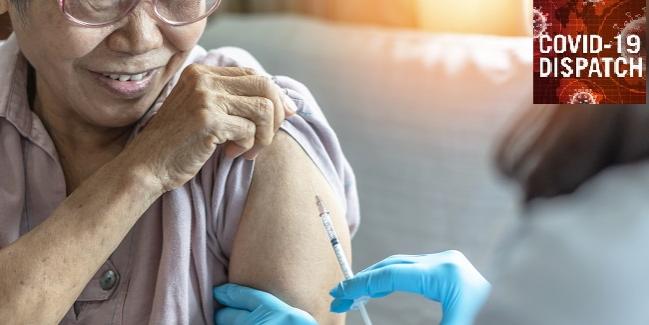
TCTMD reporter Todd Neale is keeping up on breaking news and peer-reviewed research related to COVID-19 and will update daily. If you have something to share, tell us. All of our COVID-19 coverage can be found on our COVID-19 Hub.
February 26, 2021
The decline in COVID-19 case numbers in recent weeks in the United States has leveled off and possibly reversed, which Rochelle Walensky, MD, director of the US Centers for Disease Control and Prevention (CDC), called concerning on Friday, Reuters reports. “Things are tenuous. Now is not the time to relax restrictions. Cases, hospital admissions, and deaths all remain very high and the recent shift in the pandemic must be taken extremely seriously,” she told reporters. Apoorva Mandavilli of the New York Times discusses how a potential comeback can be thwarted.
In contrast to the US situation, cases continue to fall around the world. According to the latest update from the World Health Organization (WHO), covering data through February 21, new cases fell for the sixth consecutive week, and new deaths declined for the third straight week. Reporters from the Telegraph explore the possible explanations for the positive trends.
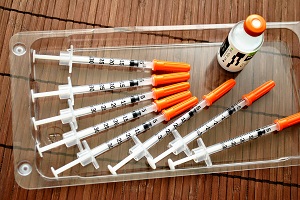 On Friday, Canadian regulators approved the COVID-19 vaccine from AstraZeneca and the University of Oxford for emergency use, the third to get the green light in that country following vaccines from Pfizer/BioNTech and Moderna, the Associated Press reports. Prime Minister Justin Trudeau said the country, with a population of 38 million, will now get a total of 6.5 million vaccine doses by the end of March, half a million more than was expected before the latest approval.
On Friday, Canadian regulators approved the COVID-19 vaccine from AstraZeneca and the University of Oxford for emergency use, the third to get the green light in that country following vaccines from Pfizer/BioNTech and Moderna, the Associated Press reports. Prime Minister Justin Trudeau said the country, with a population of 38 million, will now get a total of 6.5 million vaccine doses by the end of March, half a million more than was expected before the latest approval.
Members of a US Food and Drug Administration (FDA) advisory committee are meeting today to consider emergency approval of the Janssen vaccine from Johnson & Johnson, and reporters from STAT are live-blogging the proceedings. The vaccine, which would be the third available in the United States if approved, could be a game changer, the reporters say, pointing to its administration as a single dose and its ability to be stored in a regular refrigerator. The panel is expected to recommend approval. Bahrain became the first country to authorize the vaccine on Thursday, the AP reports.
The FDA has provided more flexibility for storage and transportation of the Pfizer/BioNTech vaccine, allowing it to be kept at conventional temperatures commonly found in pharmaceutical freezers for a period of up to 2 weeks. Until now, the vaccine had to be kept at ultra-low temperatures between -80ºC to -60ºC (-112ºF to -76ºF). An FDA official said in a press release that this “should help to get vaccine to more sites.”
Use of convalescent plasma to treat COVID-19 does not reduce all-cause mortality or have any other clinical benefits compared with either placebo or standard of care, according to a meta-analysis of both published and unpublished evidence in JAMA. The largest trial included in the analysis, RECOVERY, halted its evaluation of convalescent plasma for patients hospitalized with COVID-19 back in the middle of January due to futility.
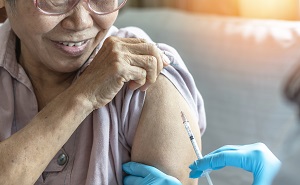 “Vaccinating the oldest against COVID-19 saves both the most lives and most years of life.” That’s the perhaps surprising conclusion of an analysis in PNAS. “While it is true that remaining life expectancy declines with age, this decline is overwhelmed by the exponentially increasing risk of death,” the authors explain. Thus, for COVID-19, there does not appear to be a trade-off between minimizing the total number of deaths and maximizing remaining life.
“Vaccinating the oldest against COVID-19 saves both the most lives and most years of life.” That’s the perhaps surprising conclusion of an analysis in PNAS. “While it is true that remaining life expectancy declines with age, this decline is overwhelmed by the exponentially increasing risk of death,” the authors explain. Thus, for COVID-19, there does not appear to be a trade-off between minimizing the total number of deaths and maximizing remaining life.
Demand for COVID-19 vaccination is high in Germany, but many people there are avoiding the vaccine by AstraZeneca and the University of Oxford and preferentially seeking the one from Pfizer/BioNTech because of perceived differences in efficacy, the New York Times reports. Many experts, including Anthony Fauci, MD, director of the US National Institute of Allergy and Infectious Disease (NIAID), recommend taking whichever vaccine is available to you to increase coverage and help limit the rise of viral variants.
The Belgian government started handing out free cloth face masks to its citizens last year, but now says that they shouldn’t be used as they “contain miniscule traces of silver and a chemical compound that initial studies now show could affect the respiratory system when inhaled deeply,” the AP reports. The country’s health minister said on Thursday that as studies continue, the masks should not be used to err on the side of caution.
As the FDA did earlier this week, the European Medicines Agency (EMA) has released guidance for industry on modifying COVID-19 vaccines in response to the emergence of SARS-CoV-2 variants. The vaccines currently authorized for use in Europe protect against variants currently circulating there, the agency said in a press release. “However, it appears that with continued mutations and new variants emerging, authorized vaccines may need to be adapted, in time to ensure continued protection.”
February 25, 2021
Real-world data from Israel’s mass vaccination campaign, published in the New England Journal of Medicine, indicates that the COVID-19 vaccine from Pfizer/BioNTech is highly effective, bolstering clinical trial findings. After the second dose, effectiveness was 92% for documented infection, 94% for symptomatic disease, 87% for hospitalization, and 92% for severe disease. When looking at death from COVID-19, estimated effectiveness was 72% 14 to 20 days after the first dose. “We were surprised because we expected that in the real-world setting, where cold chain is not maintained perfectly and the population is older and sicker, that you will not get as good results as you got in the controlled clinical trials,” the senior study author told Reuters. “But we did and the vaccine worked as well in the real world.”
 Medical oxygen has become scare in many parts of the world amid pandemic-related surges in demand, with deadly consequences, according to an Associated Press story putting the focus on crises in Africa and Latin America: “It takes about 12 weeks to install a hospital oxygen plant and even less time to convert industrial oxygen manufacturing systems into a medical-grade network. But in Brazil and Nigeria, as well as in less-populous nations, decisions to fully address inadequate supplies only started being made last month, after hospitals were overwhelmed and patients started to die.”
Medical oxygen has become scare in many parts of the world amid pandemic-related surges in demand, with deadly consequences, according to an Associated Press story putting the focus on crises in Africa and Latin America: “It takes about 12 weeks to install a hospital oxygen plant and even less time to convert industrial oxygen manufacturing systems into a medical-grade network. But in Brazil and Nigeria, as well as in less-populous nations, decisions to fully address inadequate supplies only started being made last month, after hospitals were overwhelmed and patients started to die.”
The US Centers for Disease Control and Prevention (CDC) has launched a nationwide VaccineFinder tool, which allows users to search for availability by zip code. The initial rollout is limited, STAT reports. “The site will only include inventory data from 29,000 providers to start, roughly a quarter of the national total. They will include locations in four states—Alaska, Indiana, Iowa, and Tennessee—along with providers registered in the federal pharmacy program.”
The incidence of atrial fibrillation/flutter is similar in patients hospitalized with COVID-19 and in those hospitalized with influenza, and confers a comparable increase in the risk of mortality, researchers report in JACC: Clinical Electrophysiology. That “suggests that atrial fibrillation/flutter is not specific to COVID-19, but is rather a generalized response to the systemic inflammation of severe viral illnesses,” they conclude.
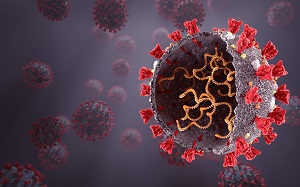 Two preprint studies—one from researchers at Columbia University and the other from a team at the California Institute of Technology—have highlighted the emergence of a SARS-CoV-2 variant in New York City, called B.1.526. As Apoorva Mandavilli writes in the New York Times, the strain, which first appeared in samples collected in November and now accounts for roughly one-quarter of viral sequences in a scientific database, “carries a worrisome mutation that may weaken the effectiveness of vaccines.”
Two preprint studies—one from researchers at Columbia University and the other from a team at the California Institute of Technology—have highlighted the emergence of a SARS-CoV-2 variant in New York City, called B.1.526. As Apoorva Mandavilli writes in the New York Times, the strain, which first appeared in samples collected in November and now accounts for roughly one-quarter of viral sequences in a scientific database, “carries a worrisome mutation that may weaken the effectiveness of vaccines.”
Meanwhile, on the west coast, the number of COVID-19 deaths has exceeded 50,000 in California, the first US state to reach that threshold, the Los Angeles Times reports. The milestone was accompanied by reports of infections in the state caused by more-transmissible variants first identified in the United Kingdom and South Africa.
A piece in KHN details the complications around finding out exactly where infections tied to variant strains of SARS-CoV-2 are cropping up: “The problem is that the tests in question for detecting variants have not been approved as a diagnostic tool either by the Food and Drug Administration or under federal rules governing university labs―meaning that the testing being used right now for genomic sequencing is being done as high-level lab research with no communication back to patients and their doctors.”
Similar to what has been reported recently for nursing schools, there has been a bump in applications for medical school during the pandemic, according to the Christian Science Monitor. Data from the Association of American Medical Colleges (AAMC) show that applications for this year rose 18%. “While these applicants won’t practice during the COVID-19 pandemic, their increase is tangible evidence of a rally-round-the-flag effect in public health and medicine, which could help stave off a looming shortage of medical workers in the next decade.
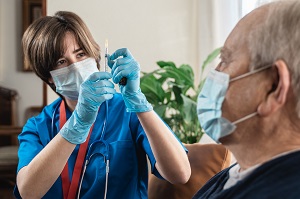 Vaccine makers are responding to the threat posed by the mutant strains of the virus with new studies. As STAT reports, Moderna is planning to test a modified version of its vaccine—both alone and in combination with the current formulation—against the B.1.351 variant first detected in South Africa, pending regulatory approval for the study. And Pfizer and BioNTech are planning to test whether an extra third dose of their vaccine will be enough to overcome variants’ defenses. That approach is “certainly reasonable,” one expert told STAT. If variants were “completely resistant . . . you would have to have a second-generation vaccine including the new variant. But if they’re not completely resistant you can give another booster dose with one of these mRNA vaccines and you could get higher titer.”
Vaccine makers are responding to the threat posed by the mutant strains of the virus with new studies. As STAT reports, Moderna is planning to test a modified version of its vaccine—both alone and in combination with the current formulation—against the B.1.351 variant first detected in South Africa, pending regulatory approval for the study. And Pfizer and BioNTech are planning to test whether an extra third dose of their vaccine will be enough to overcome variants’ defenses. That approach is “certainly reasonable,” one expert told STAT. If variants were “completely resistant . . . you would have to have a second-generation vaccine including the new variant. But if they’re not completely resistant you can give another booster dose with one of these mRNA vaccines and you could get higher titer.”
February 24, 2021
It looks like a third COVID-19 vaccine will soon be coming to the United States. In documents released ahead of an advisory committee meeting on Friday, US Food and Drug Administration (FDA) scientists conclude that Johnson & Johnson’s single-shot Janssen vaccine provides strong protection against severe disease and is safe to use. An Associated Press story points out that if/when the FDA approves the vaccine for emergency use, US vaccine supplies will not be substantially increased right away, as “only a few million doses are expected to be ready for shipping in the first week.”
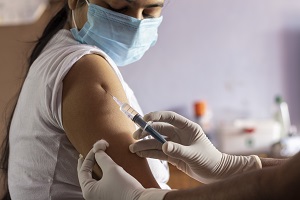 India has announced an expansion of its vaccination program as many parts of the country are experiencing a surge in SARS-CoV-2 infections, Reuters reports. “Nearly a month after the health minister declared that COVID-19 had been contained, states such as Maharashtra in the west and Kerala in the south have reported a spike in cases amid growing reluctance to wear masks and maintain social distancing.” India has the second-highest COVID-19 case number in the world, about 11.03 million, behind the United States (28.3 million).
India has announced an expansion of its vaccination program as many parts of the country are experiencing a surge in SARS-CoV-2 infections, Reuters reports. “Nearly a month after the health minister declared that COVID-19 had been contained, states such as Maharashtra in the west and Kerala in the south have reported a spike in cases amid growing reluctance to wear masks and maintain social distancing.” India has the second-highest COVID-19 case number in the world, about 11.03 million, behind the United States (28.3 million).
The World Health Organization’s COVAX initiative has delivered its first vaccines, with 600,000 doses from AstraZeneca and the University of Oxford arriving in Ghana on Wednesday, according to the Washington Post. Similar shipments are expected arrive in other countries in the region soon.
Data published in JAMA Internal Medicine support the idea that patients with antibodies to SARS-CoV-2 are protected from reinfection, although the duration of protection remains unknown. “Additional research is needed to understand how long this protection lasts, who may have limited protection, and how patient characteristics, such as comorbid conditions, may impact protection,” the senior author said in a press release. “We are nevertheless encouraged by this early finding.”
A SARS-CoV-2 strain dubbed B.1.427/B.1.429 “that probably emerged in May and surged to become the dominant strain in California not only spreads more readily than its predecessors but also evades antibodies generated by COVID-19 vaccines or prior infection and is associated with severe illness and death,” according to unpublished data detailed in the Los Angeles Times. “The devil is already here,” said one of the researchers. “I wish it were different. But the science is the science.”
Germany approved three COVID-19 tests that can be administered at home as part of a strategy to come out of the country’s lockdown implemented in mid-December, Reuters reports: “Chancellor Angela Merkel has told lawmakers in her conservative party that making rapid tests more available and boosting testing capacity could make a return to normality more durable, two sources at the meeting told Reuters on Tuesday.”
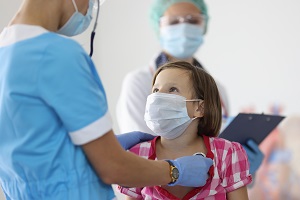 Among patients younger than 21, those diagnosed with the multisystem inflammatory syndrome in children (MIS-C) versus severe acute COVID-19 tended to be older; were more likely to be non-Hispanic Black; were more likely to have cardiorespiratory, cardiovascular, or mucocutaneous involvement; had a higher neutrophil-to-lymphocyte ratio and C-reactive protein level; and had a lower platelet count, according to a study in JAMA. MIS-C patients also were more likely to require ICU admission and had a slightly higher in-hospital mortality rate (1.9% vs 1.4%). “Most severe cardiovascular involvement from MIS-C, including left ventricular dysfunction and coronary artery aneurysms, resolved within 30 days,” the authors write.
Among patients younger than 21, those diagnosed with the multisystem inflammatory syndrome in children (MIS-C) versus severe acute COVID-19 tended to be older; were more likely to be non-Hispanic Black; were more likely to have cardiorespiratory, cardiovascular, or mucocutaneous involvement; had a higher neutrophil-to-lymphocyte ratio and C-reactive protein level; and had a lower platelet count, according to a study in JAMA. MIS-C patients also were more likely to require ICU admission and had a slightly higher in-hospital mortality rate (1.9% vs 1.4%). “Most severe cardiovascular involvement from MIS-C, including left ventricular dysfunction and coronary artery aneurysms, resolved within 30 days,” the authors write.
The US National Institutes of Health (NIH) has launched a new effort to study patients who have lingering symptoms after recovering from SARS-CoV-2 infection, a condition that has come to be called “long COVID.” Initially researchers will explore the frequency of long COVID, the underlying biological causes, and factors associated with increased vulnerability.
A Danish study in the European Heart Journal shows that during and after initial COVID-19-related lockdowns, the in-hospital mortality rate was lower and the out-of-hospital mortality rate higher among patients with cardiovascular disease compared the same time period in 2019, although there was no difference in overall mortality. “While our findings apparently do not suggest any collateral effects of the lockdown strategy on the care of patients with cardiovascular diseases, further data are needed to establish the long-term impact on the prognosis in these patients,” the researchers say.
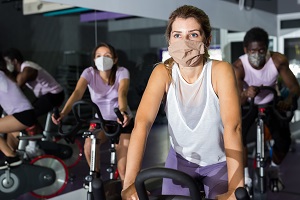 Two studies in Morbidity and Mortality Weekly Report—one out of Honolulu, HI, and one out of Chicago, IL—delve into how SARS-CoV-2 spreads in gyms. In the latter study, 55 COVID-19 cases were identified among 81 people who attended an indoor high-intensity exercise class. Most people (76%) were not wearing masks, and 22 participants attended the class on or after the day symptoms started. Gyms should require masks during exercise, decrease class sizes, require physical distancing, and improve ventilation, the authors advise.
Two studies in Morbidity and Mortality Weekly Report—one out of Honolulu, HI, and one out of Chicago, IL—delve into how SARS-CoV-2 spreads in gyms. In the latter study, 55 COVID-19 cases were identified among 81 people who attended an indoor high-intensity exercise class. Most people (76%) were not wearing masks, and 22 participants attended the class on or after the day symptoms started. Gyms should require masks during exercise, decrease class sizes, require physical distancing, and improve ventilation, the authors advise.
February 23, 2021
The United States officially topped 500,000 COVID-19 deaths on Monday, less than a year into the pandemic. As the Associated Press notes, “experts warn that about 90,000 more deaths are likely in the next few months, despite a massive campaign to vaccinate people.” The country with the second highest death total, Brazil, has seen half as many deaths as the US (about 247,000), according to the Johns Hopkins COVID-19 Dashboard.
The US Food and Drug Administration (FDA) has released guidance for the development of vaccines, diagnostic tests, and therapeutics that address emerging viral variants. Acting FDA Commissioner Janet Woodcock, MD, said at a press conference that vaccine makers need to be proactive, Reuters reports. “We need to anticipate this and work on it, so that we have something in our back pocket before the threshold is upon us,” she said.
 A study recently published in Emerging Infectious Diseases, looking at what happened when schools and childcare centers in Hong Kong reopened after COVID-19-related closures, suggests that officials elsewhere should anticipate increased outbreaks of the common cold when kids return to those settings. “I can imagine places where schools have been closed for a long time are going to have the same experience as Hong Kong,” the senior author told STAT. “That when the schools go back there’s suddenly going to be a lot of rhinoviruses going around, a lot of kids getting sick with colds, and then their parents getting it off them and then panicking that it could be COVID.”
A study recently published in Emerging Infectious Diseases, looking at what happened when schools and childcare centers in Hong Kong reopened after COVID-19-related closures, suggests that officials elsewhere should anticipate increased outbreaks of the common cold when kids return to those settings. “I can imagine places where schools have been closed for a long time are going to have the same experience as Hong Kong,” the senior author told STAT. “That when the schools go back there’s suddenly going to be a lot of rhinoviruses going around, a lot of kids getting sick with colds, and then their parents getting it off them and then panicking that it could be COVID.”
In a blog post, Francis Collins, MD, PhD, director the US National Institutes of Health (NIH), has weighed in on the discussion about whether one COVID-19 vaccine dose provides enough protection, spurred by recent studies suggesting that that’s the case, particularly in people who have recovered from COVID-19. Such a policy would help stretch the vaccine supply to cover more people. Collins says, however, that “any serious consideration of this option will require more data.”
Americans’ willingness to take a COVID-19 vaccine appears more tightly linked to the vaccine’s effectiveness and risk of serious adverse events, as opposed to the risk of minor side effects like fever and arm pain, according to a study in PNAS.
 Transmission does occur in schools, but an analysis in Morbidity and Mortality Weekly Report indicates that teachers may play a more-prominent role in spread compared with students. Of the nine transmission clusters identified in a Georgia school district, all involved “less-than-ideal” social distancing, and five involved inadequate mask use. “Multifaceted mitigation measures in schools, including promotion of COVID-19 precautions outside of school, minimizing in-person adult interactions at school, and ensuring universal and correct mask use and physical distancing among educators and students when in-person interaction is unavoidable, are important in preventing in-school transmission of SARS-CoV-2,” the investigators say, adding that vaccination should be considered as another mitigation measure.
Transmission does occur in schools, but an analysis in Morbidity and Mortality Weekly Report indicates that teachers may play a more-prominent role in spread compared with students. Of the nine transmission clusters identified in a Georgia school district, all involved “less-than-ideal” social distancing, and five involved inadequate mask use. “Multifaceted mitigation measures in schools, including promotion of COVID-19 precautions outside of school, minimizing in-person adult interactions at school, and ensuring universal and correct mask use and physical distancing among educators and students when in-person interaction is unavoidable, are important in preventing in-school transmission of SARS-CoV-2,” the investigators say, adding that vaccination should be considered as another mitigation measure.
Other interventions besides school closures appear to have a greater impact on SARS-CoV-2 transmission, a study in JAMA Pediatrics suggests. Voluntary behavioral changes, like spending less time at work, led to greater declines in COVID-19 incidence and mortality. “Given the uncertainty surrounding the severity and transmission dynamics of the disease, the decision to close schools in spring 2020 was reasonable,” the authors say. “However, this analysis suggests that school closures did not play the only or even most-important role in slowing the spread of the disease.”
During the first part of the pandemic, trauma admissions fell but quickly returned to normal in Los Angeles County, researchers report in JAMA Network Open. There were higher rates of penetrating trauma and lower rates of blunt injuries in 2020 compared with 2019. “These findings highlight the persistence of trauma burden in the community despite widespread restriction on public activity and the need to maintain trauma care resources and violence mitigation efforts during national emergencies,” they conclude.
 Another AP story delves into an issue that has been affecting people’s quality of life over the past year—COVID-19-related anosmia, or loss of smell. There are still a lot of unknowns when it comes to the condition, but “impairment and alteration of smell have become so common with COVID-19 that some researchers suggest that simple odor tests could be used to track coronavirus infections in countries with few laboratories.”
Another AP story delves into an issue that has been affecting people’s quality of life over the past year—COVID-19-related anosmia, or loss of smell. There are still a lot of unknowns when it comes to the condition, but “impairment and alteration of smell have become so common with COVID-19 that some researchers suggest that simple odor tests could be used to track coronavirus infections in countries with few laboratories.”
February 22, 2021
The United States is inching closer to half a million COVID-19 deaths: the total had reached 499,075 as of Monday morning, according to the Johns Hopkins COVID-19 Dashboard. The number of lives lost is roughly the same as the populations of cities like Kansas City, MO, and Atlanta, GA, the Associated Press points out. The front page of the New York Times on Sunday included a graphic illustrating when those deaths occurred throughout the pandemic, with a black dot representing each life. The picture has become much darker, literally and figuratively, over the past few months.
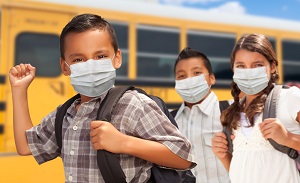 British Prime Minister Boris Johnson has a plan to bring the United Kingdom out of COVID-19-related lockdowns in a phased fashion, Reuters reports. The first stage would prioritize schools reopening on March 8. The country would then move through the next four stages, with 5 weeks in between each one. The final step, in which most restrictions would be removed, would not start until June 21 at the earliest.
British Prime Minister Boris Johnson has a plan to bring the United Kingdom out of COVID-19-related lockdowns in a phased fashion, Reuters reports. The first stage would prioritize schools reopening on March 8. The country would then move through the next four stages, with 5 weeks in between each one. The final step, in which most restrictions would be removed, would not start until June 21 at the earliest.
In the Atlantic, James Hamblin, MD, describes what could be “a quite possibly wonderful summer” involving the lifting of many of the restrictions that have been in place in the United States over the past year as COVID-19 cases continue to decline and vaccinations ramp up. “Because case numbers guide local policies, much of the country could soon have reason to lift many or even most restrictions on distancing, gathering, and masking,” Hamblin writes. “Prepandemic norms could return to schools, churches, and restaurants. Sports, theater, and cultural events could resume. People could travel and dance indoors and hug grandparents, their own or others’. In most of the US, the summer could feel . . . ‘normal.’” But the story also contains notes of caution, with one vaccine expert saying, “I’m feeling generally optimistic for the US this summer. But I’m also having nightmares.”
The United States will stick with the two-dose COVID-19 vaccine schedule despite recent research suggesting good protection after just one dose, USA Today reports. “Even though you can get a fair degree of protection after a single dose, it clearly is not durable,” Anthony Fauci, MD, director of the US National Institute of Allergy and Infectious Diseases (NIAID), said during a press conference. “We know that the durability is not as much as the durability that you would get with the boost.”
 Not every patient with COVID-19 should get a cardiovascular magnetic resonance (CMR) scan to check for myocardial damage, but that doesn’t mean the imaging modality can’t play an important role during the pandemic, experts agreed during a debate and panel discussion held Friday at the opening plenary of the Society for Cardiovascular Magnetic Resonance (SCMR) virtual scientific sessions. Find TCTMD’s story here.
Not every patient with COVID-19 should get a cardiovascular magnetic resonance (CMR) scan to check for myocardial damage, but that doesn’t mean the imaging modality can’t play an important role during the pandemic, experts agreed during a debate and panel discussion held Friday at the opening plenary of the Society for Cardiovascular Magnetic Resonance (SCMR) virtual scientific sessions. Find TCTMD’s story here.
Increases in adverse mental health symptoms seen among US adults early during the pandemic persisted into at least September, according to an updated analysis in JAMA Network Open. The findings highlight “the need to promote preventive behaviors, expand mental healthcare access, and integrate medical and behavioral health services to mitigate the mental health effects of COVID-19.”
Last week, the US Food and Drug Administration (FDA) issued an alert highlighting that pulse oximeters, though useful for estimating blood oxygen levels, “have limitations and a risk of inaccuracy under certain circumstances that should be considered.” Though the communication mentions that skin pigmentation can affect accuracy, there was no explicit mention of racial disparities uncovered in recent studies, “likely disappointing clinicians and patients who have sought to draw attention to the issue,” according to a STAT story.
The FDA also released a statement to stress that current evidence indicates that SARS-CoV-2 is not being transmitted through food or food packaging: “Consumers should be reassured that we continue to believe, based on our understanding of currently available reliable scientific information, and supported by overwhelming international scientific consensus, that the foods they eat and food packaging they touch are highly unlikely to spread SARS-CoV-2.”
 Post-traumatic stress disorder is common after acute COVID-19, with Italian researchers identifying a prevalence of 30% in a cohort of patients who presented to the emergency department with SARS-CoV-2 infection. Patients with PTSD were more frequently women and had higher rates of a history of psychiatric disorders and delirium or agitation during acute illness. They also presented with more persistent medical symptoms in the post-illness stage, according to findings published in JAMA Psychiatry.
Post-traumatic stress disorder is common after acute COVID-19, with Italian researchers identifying a prevalence of 30% in a cohort of patients who presented to the emergency department with SARS-CoV-2 infection. Patients with PTSD were more frequently women and had higher rates of a history of psychiatric disorders and delirium or agitation during acute illness. They also presented with more persistent medical symptoms in the post-illness stage, according to findings published in JAMA Psychiatry.
COVID-19: TCTMD’s Daily Dispatch for March 2021 Week 1
COVID-19: TCTMD’s Daily Dispatch for February 2021 Week 3
COVID-19: TCTMD’s Daily Dispatch for February 2021 Week 2
COVID-19: TCTMD’s Daily Dispatch for February 2021 Week 1
Todd Neale is the Associate News Editor for TCTMD and a Senior Medical Journalist. He got his start in journalism at …
Read Full Bio

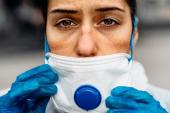

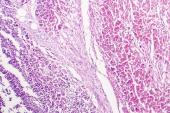
Comments